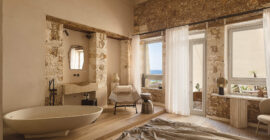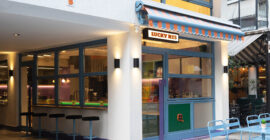Inverse design
This grade B listed Georgian house in the Portobello Conservation Area in Edinburgh had been used as a dental practice for decades before being purchased by a young couple, keen to transform it back into a family home.
Renovation Strategy
The original house had historic extensions to the rear and side, resulting in a disjointed cellular layout. The previous use of the house meant that many original features had been preserved, but were hidden under layers of flooring, paint and wall coverings. The brief was to remove the incongruous additions, and restore the house to its former glory, while adding contemporary elements to create a practical and light-filled home.

Extension Strategy
The proposal features a sociable kitchen and dining space to the rear of the house with a direct connection to the back garden. To achieve this an old utility extension was removed and replaced with a highly glazed dining area on the same footprint. The room which would have been the original kitchen was enlarged by connecting it to an adjacent store, and to the new extension. An original stone floor was discovered under layers of concrete, which was carefully cleaned and re-laid. Large hardwood windows and sliding doors provide a visual and physical connection to the garden. The raised planter outside the large, fixed window, overflowing with herbs and other edibles, creates a sensation of sitting in the garden.
A ground floor shower room was created by reconfiguring the layout and raising the floor level of a previous side extension. Utility functions such as laundry, boiler and storage are concealed behind full height doors. The ensuite to the master bedroom is also concealed, accessed through the bespoke built-in wardrobe. During the renovation, many historic features, such as the original cornice to the drawing room and master bedroom, iron balustrade and stone stair and floors, were revealed and lovingly restored. Layers of commercial wall paneling, thick paints and floor screeds were carefully removed. Original shutters were reopened, fireplaces cleaned and restored, and timber paneling, skirtings and architraves repaired.

Sustainability Approach
The energy performance of the house has been improved through the discreet incorporation of thermal insulation: between floor joists, at roof level and, where no decorative cornicing existed, as an internal lining to external walls. The original sash and case windows to the front of the house were beyond repair, and were replaced with high-performance slimline double glazed sashes, carefully designed to match the original profiles. At the rear of the house the original windows have been retained, with new draught proofing.






